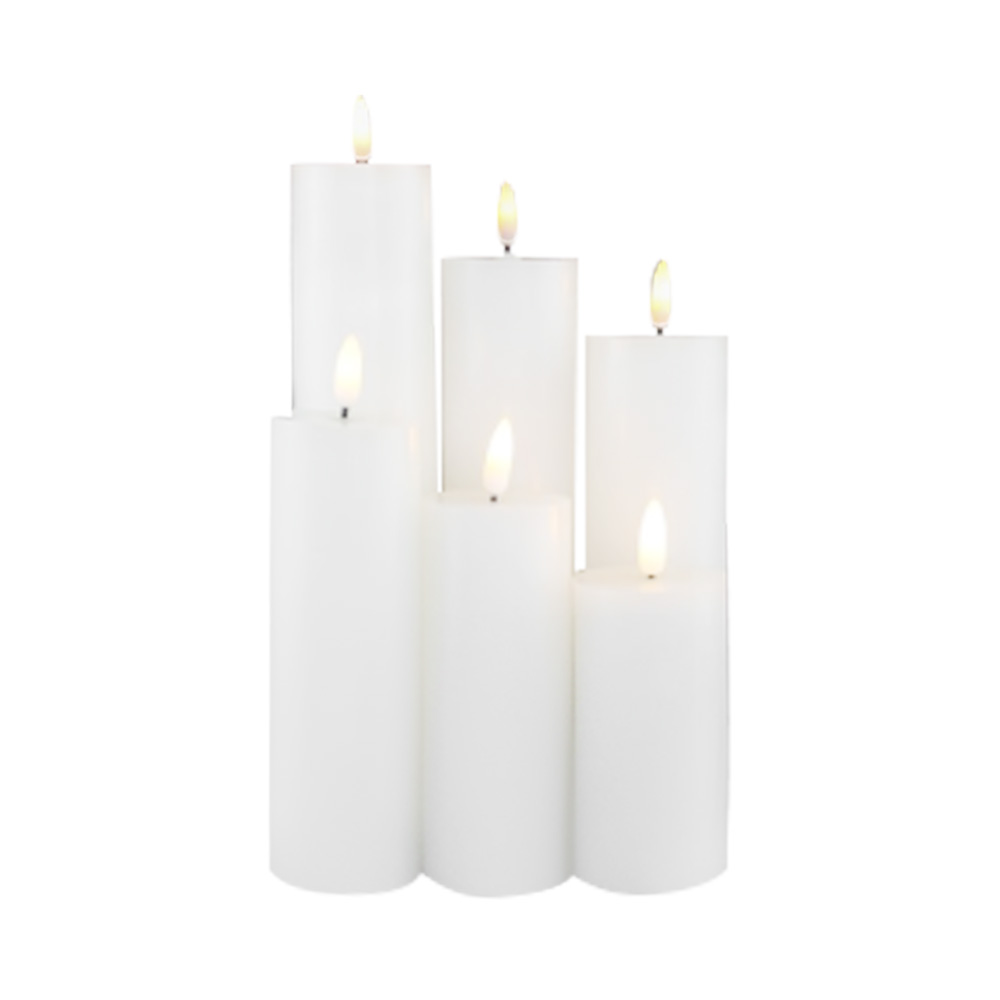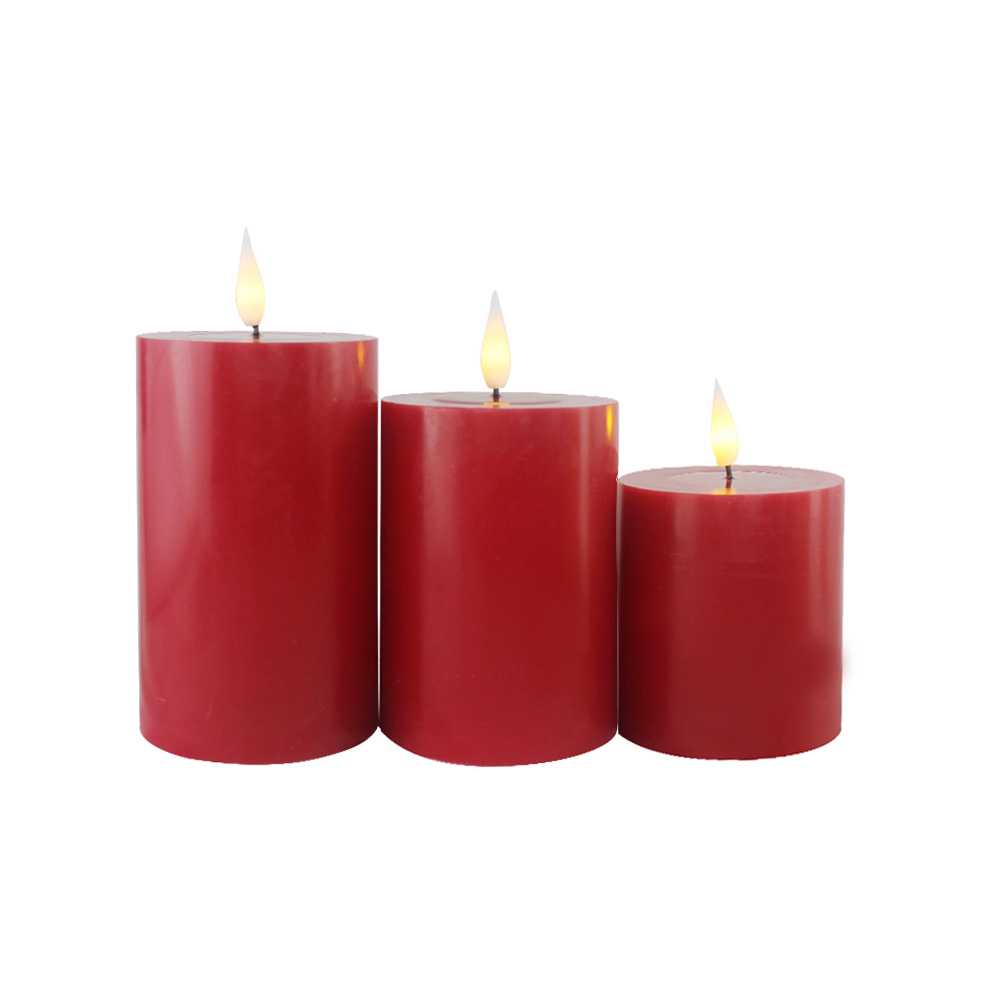Are LED electronic candles easily damaged during transportation and storage?
Introduction to LED Electronic Candles
LED electronic candles are widely used as a substitute for traditional candles because they provide decorative lighting without open flames, dripping wax, or smoke. They are typically made of plastic or wax-like materials and contain a small LED light that mimics the appearance of a flame. Despite their practicality and safety advantages, questions often arise about their durability during transportation and storage. Understanding the potential risks and protective measures can help manufacturers, retailers, and consumers handle them more effectively.
Structural Composition and Potential Fragile Points
The structural composition of LED electronic candles includes outer casings, internal circuits, batteries, and LED modules. These components vary in sensitivity to physical stress. The outer casing can be made from either paraffin wax or plastic. Wax-based casings provide a more realistic look but are more fragile and prone to chipping or cracking. Plastic casings are more durable but can deform under high pressure. Internal circuit boards and LEDs are small and delicate, and excessive vibration during shipping could lead to loose connections or solder joint failures. Batteries also add complexity, as they must be protected from impacts that could cause leakage or reduced performance.
| Component | Material Type | Potential Weakness During Transport | Durability Level |
|---|---|---|---|
| Outer Casing | Wax or Plastic | Cracks, scratches, or deformation | Medium |
| LED Module | Semiconductor | Sensitive to vibration or electrical shock | High |
| Circuit Board | Fiberglass/Epoxy | Loose solder joints or broken connections | Medium |
| Battery Compartment | Metal/Plastic Mix | Risk of leakage, terminal displacement | Medium |
Packaging Requirements During Transportation
Packaging plays a critical role in determining whether LED electronic candles arrive intact. Insufficient packaging materials or inadequate cushioning can result in cracked casings or damaged electronics. For candles made with wax exteriors, packaging should use soft protective layers such as foam or molded pulp trays that minimize friction and direct impact. Plastic-bodied versions may withstand slightly more stress, but they also need shock-absorbing packaging to prevent scratches or pressure marks. Corrugated cardboard boxes with internal partitions are commonly used to separate each candle. Air cushions or bubble wrap add further protection by dispersing external forces during transit.
Environmental Factors During Storage
Storage conditions significantly influence the durability of LED electronic candles. Wax casings are particularly sensitive to temperature fluctuations; high temperatures can cause melting, while very low temperatures may make the material brittle. Plastic casings are more stable but may warp if exposed to prolonged sunlight or heat sources. Humidity is another factor, as excessive moisture can corrode battery terminals and affect electronic components. Dust accumulation during long-term storage may block the light output or interfere with switches. Thus, storage environments must remain stable, dry, and free from direct sunlight.
| Environmental Factor | Impact on Wax-Based Candles | Impact on Plastic-Based Candles | Recommended Condition |
|---|---|---|---|
| Temperature | Risk of melting or brittleness | Possible deformation | 15–25°C, stable |
| Humidity | Corrosion of battery terminals | Minor effect but condensation | < 60% RH |
| Sunlight Exposure | Color fading, melting risk | Deformation or discoloration | Dark, shaded area |
| Dust | Surface dirt, blocked sensors | Surface scratches | Clean, enclosed space |
Impact of Transportation Routes and Handling
Transportation routes and handling methods also influence damage risks. Long-distance shipping exposes products to repeated loading and unloading, vibration from vehicles, and potential impacts. Air transport may involve lower pressure and temperature fluctuations, which can affect batteries. Sea transport often poses risks from high humidity and salt exposure. Handling at warehouses is equally important, as rough stacking or dropping boxes can cause visible or internal damage. Staff training and clear labeling such as "Fragile" or "Keep Dry" can reduce incidents.
Common Failure Modes During Transportation and Storage
There are several recurring failure modes that manufacturers and retailers report during handling of LED electronic candles. These include cracked wax casings, broken switch mechanisms, drained or leaking batteries, and detached LED modules. Such failures may not always be immediately visible upon delivery, as internal circuit damage may manifest only after prolonged use.
| Failure Mode | Likely Cause | Preventive Measure |
|---|---|---|
| Cracked Outer Casing | Physical impact or stacking pressure | Use cushioning and avoid overloading |
| Switch Malfunction | Vibration damaging mechanical parts | Reinforce switch design and packaging |
| Battery Leakage | Temperature fluctuation, pressure | Stable climate, shock-absorbing trays |
| LED Detachment | Excessive vibration or poor soldering | Quality soldering, reduce transport shock |
Protective Strategies for Manufacturers and Retailers
Manufacturers and retailers can minimize risks by adopting multiple protective strategies. Using reinforced packaging tailored to the candle’s size and material is essential. Wax-based models should always be transported in temperature-controlled environments. Retailers should perform inspections upon arrival, checking both physical appearance and battery integrity. Clear storage guidelines, including avoidance of direct sunlight and maintenance of stable humidity, help preserve product integrity. Additionally, adopting moisture-absorbing packets inside packaging can prevent corrosion issues during long-distance shipping.
Consumer Considerations for Storage at Home
Even after purchase, consumers must pay attention to storage. LED electronic candles should be kept away from heat sources such as radiators or windows exposed to direct sunlight. If candles are not used for long periods, it is recommended to remove the batteries to avoid leakage. Storing the candles in their original packaging provides added protection against dust and physical stress. Consumers should also avoid placing heavy objects on top of stored candles, especially those with wax bodies.
Cost-Benefit Analysis of Protective Measures
Investing in protective packaging and stable storage environments does increase costs, but these costs are generally lower than the expenses related to damaged goods, product returns, or brand reputation loss. For instance, using custom foam inserts adds material cost but significantly reduces breakage rates. On the other hand, failing to control storage temperature may result in higher product replacement costs.
| Protective Measure | Additional Cost Level | Damage Reduction Effect | Overall Benefit |
|---|---|---|---|
| Custom Foam Inserts | Medium | High | Positive |
| Climate-Controlled Storage | High | High | Case-dependent |
| Battery Removal Before Storage | Low | Medium | Positive |
| Moisture Absorbing Packets | Low | Medium | Positive |

Ningbo Weizhi Electronics Co., Ltd.
- We will be pleased to provide products with high quality, reasonable price, punctual delivery and best service for you!
GET A QUOTE
No.16, Zhuangqiao Loujia Xinqiao 3rd Road, Jiangbei District, Ningbo china
-
 +86-18067520996
+86-18067520996
-
 +86-574-86561907
+86-574-86561907
-
 +86-574-86561907
+86-574-86561907
-
 [email protected]
[email protected]
Copyright 2024 Ningbo Weizhi Electronics Co., Ltd. All Rights Reserved.




 English
English Deutsch
Deutsch







